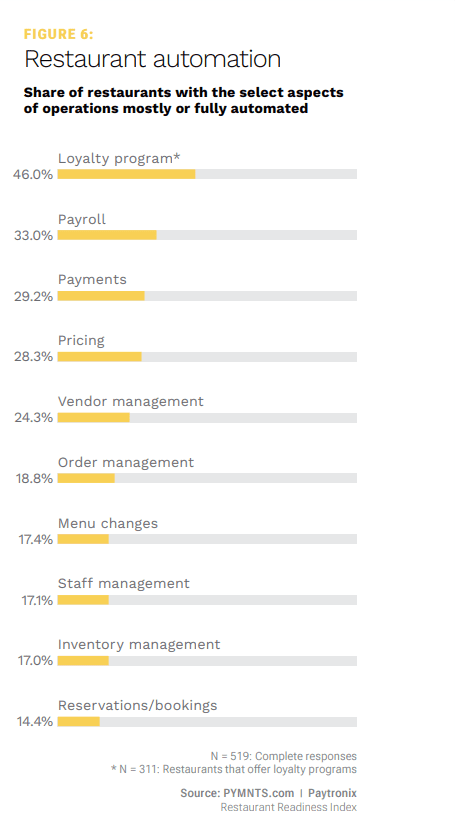Restaurants’ Legacy Payment Processes Cost Revenue, Time and Clients

With restaurants struggling to maintain profits, legacy B2B payment practices may drain revenue they can’t afford to lose.
Although many restaurants have adopted consumer-facing innovations to stay competitive in a tight market, backend systems tend to lag behind. The July 2022 PYMNTS/Paytronix collaboration, “Restaurant Readiness Index,” found that this holds especially true for independent table service restaurants, as only 13% are powered by digital channels.
Even when including the more digital-ready quick-service and fast-casual restaurants, “behind the scenes” automated innovation still takes a backseat to customer-facing capabilities.

Automation platforms and partners may assist restaurants of all sizes in streamlining back-end processes, relieving the burden of manual practices.
In a PYMNTS interview, Jordan Huck, CEO of B2B food and beverage marketplace Notch, discussed the challenges legacy systems place on the restaurant/distributor relationship.
“For a typical restaurant, between front of house and back of house, they’ll [have] anywhere between seven and 10 different wholesale distributor relationships, from alcohol to meat to seafood, to dairy, to produce,” Huck said. “Essentially, procurement will happen to those distributors in an offline manner. We’re going to use text or even email. I’m not going to have the ability to browse the full catalog. This is an industry that still exists off price sheets.”
Notch, which recently raised $10 million to help restaurants digitize, launched its payment platform notchPay last March. The B2B platform allows restaurants to pay via multiple methods, including credit card, ACH, wire transfers or checks, while shortening the time for distributors to receive payments.
In October, Toast announced the release of its new B2B food and beverage tool, Toast Invoicing. Along with some customer-facing features, such as capturing and tracking online orders, it also allows for digital, itemized invoices for catering and other events, as well as wholesale trade.
And new restaurant management software company MarginEdge, which automates invoice processing, announced a $45 million Series C fundraise round in December. In a PYMNTS interview, CEO Bo Davis described his company’s mission to digitize its network of vendors and restaurants end to end.
“If you think about the restaurant, it’s got, say, 25, 30, invoices coming in,” Davis said. “They’re buying on average, 500-600 different things — from napkins and spoons, to bleach to tuna. All of those items’ prices are changing. And so, [we] extract the line-item data — rather, your percentage costs, which is how restaurants traditionally have managed their food costs, they can see item by item [where] they need to focus.”
Restaurants still hanging onto legacy payments systems may be doing themselves a disservice. Automating B2B tools such as payments, pricing and vendor management could mean more than cost-cutting. There’s also a return of time, effort and personnel resources — all of which independent restaurants are generally lacking.
